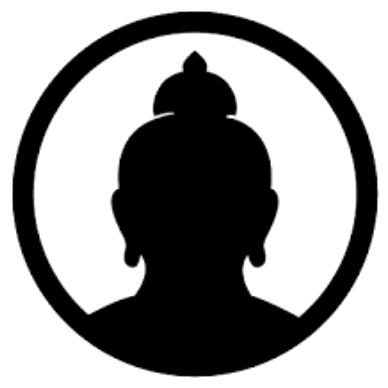A behavioral medicine pioneer reports on a time-tested technique that reverses aging and improves health.
YOU MIGHT ALSO LIKE
CLEAR ALL
BY TOPIC
BY TYPE
FILTER

TOPIC
- Self-Care (22)
- Athlete Well-Being (21)
- Self-Reflection Practices (20)
- BIPOC Well-Being (19)
- Mindfulness Meditation (18)
- Self-Mastery (18)
- Somatic Practices (18)
- Stress (18)
- Physical Health (17)
- Depression (16)
- Breathwork (13)
- Buddhism (12)
- Black Well-Being (11)
- Chronic Pain (11)
- Honoring Emotion (11)
- Entrepreneurship (10)
- Spiritual Practices (10)
- Burnout (9)
- Mindfulness (9)
- Trauma Healing (9)
- Awareness (8)
- Brain Health (8)
- Cancer (8)
- Embodiment (8)
- Neuroscience (8)
- Parenting (8)
- Self-Development (8)
- Self-Discovery (8)
- Self-Limiting Beliefs (8)
- Well-Being (8)
- Yoga (8)
- Caregiver Well-Being (7)
- Focus (7)
- Lovingkindness Meditation (7)
- Performance Pressure (7)
- Self-Love (7)
- Body Mapping (6)
- Body Scan Meditation (6)
- Emotional Intelligence (EQ) (6)
- Exercise (6)
- Illness and Injury (6)
- Mental Health Challenges (6)
- Mindfulness Practices (6)
- Movement Meditation (6)
- Self-Healing (6)
- Talk Therapy (6)
- Addiction (5)
- Chronic Health Conditions (5)
- Cognitive Behavioral Therapy (5)
- Courage (5)
- Empathy (5)
- Epigenetics (5)
- Inner Peace (5)
- Leadership (5)
- Lovingkindness (5)
- Neuroplasticity (5)
- Performance Anxiety (5)
- Presence (5)
- Psychology (5)
- PTSD (5)
- Rest (5)
- Self-Acceptance (5)
- Self-Actualization (5)
- Self-Pressure (5)
- Suicide (5)
- Trauma (5)
- Addiction Recovery (4)
- Child’s Trauma (4)
- Chronic Anxiety (4)
- Community Healing (4)
- Consciousness (4)
- Diet and Nutrition (4)
- Disabled Well-Being (4)
- Dysfunctional Childhood (4)
- Female Empowerment (4)
- Guided Meditation (4)
- Happiness (4)
- Healing Approaches (4)
- Healthy Eating (4)
- LGBTQIA Well-Being (4)
- Self-Worth (4)
- Setting Limits and Boundaries (4)
- Sleep (4)
- Spiritual Life (4)
- The Feldenkrais Method (4)
- Transcendental Meditation (4)
- Work Challenges (4)
- Young Adult Well-Being (4)
- Anger Management (3)
- Compassion (3)
- Compassion Meditation (3)
- Connection with Nature (3)
- Disconnection (3)
- Energy Healing (3)
- Enlightenment (3)
- Fear (3)
- Grief (3)
- Growth Mindset (3)
- Indigenous Well-Being (3)
- Inner Life (3)
- Intergenerational Trauma (3)
- Joy (3)
- Latinx Well-Being (3)
- Lifestyle Medicine (3)
- Living with Illness (3)
- Mantra Meditation (3)
- Neurodiversity (3)
- Panic Attacks (3)
- Personal Development (3)
- Positive Self-Talk (3)
- Self-Esteem (3)
- Self-Expression (3)
- Shame (3)
- Trauma-Informed Therapy (3)
- Walking Meditation (3)
- Weight Concerns (3)
- Women’s Well-Being (3)
- Work-Life Balance (3)
- Yoga Therapy (3)
- Zen Meditation (3)
- AAPI Well-Being (2)
- Activism/Service (2)
- ADD/ADHD (2)
- Anger (2)
- Authenticity (2)
- Autoimmune Disease (2)
- Ayahuasca (2)
- Biofeedback (2)
- Chakra Meditation (2)
- Chanting (2)
- Child’s Emotional Growth (2)
- Death or Loss of a Loved One (2)
- Divorce and Breakup (2)
- Eating Disorders (2)
- Empowerment (2)
- Family Dynamics (2)
- Goal Setting (2)
- Gratitude (2)
- Guided Imagery (2)
- Habit Formation (2)
- Habits of Mind (2)
- Identity (2)
- Insight (Vipassana) Meditation (2)
- Insomnia (2)
- Integrative Medicine (2)
- Intention (2)
- Kirtan Music (2)
- Laughter Therapy (2)
- Life Challenges (2)
- Men’s Well-Being (2)
- Motivation (2)
- Peak Performance (2)
- Polyvagal Theory (2)
- Psychedelic-Assisted Therapy (2)
- Racial Healing (2)
- Racism (2)
- Relationship Challenges (2)
- Relationship with Time (2)
- Resilience (2)
- Science and Spirituality (2)
- Self-Compassion (2)
- Self-Control (2)
- Self-Realization (2)
- Sleep Disorders (2)
- Social Anxiety (2)
- Somatic Experiencing (2)
- Spiritual Awakening (2)
- Spiritual Development (2)
- Spiritual Growth (2)
- Spiritual Healing (2)
- Spirituality and Health (2)
- Spirituality and Politics (2)
- Suffering (2)
- T’ai Chi (2)
- Tarot (2)
- Tibetan Buddhism (2)
- Traumatic Grief (2)
- Trust (2)
- Abandonment (1)
- Acupuncture (1)
- Affirmations (1)
- Aging (1)
- Alexander Technique (1)
- Altered States (1)
- Art Therapy (1)
- Asking for Help (1)
- Attachment Theory (1)
- Awe (1)
- Calming Meditation (1)
- Child’s ADD/ADHD (1)
- Christianity (1)
- Climate Change (1)
- Clinical Depression (1)
- Cognitive Psychology (1)
- Collaboration (1)
- Collective Trauma (1)
- Comparing Belief Traditions (1)
- Confidence (1)
- Connection (1)
- Creative Well-Being (1)
- Cross-Cultural Dynamics (1)
- Cross-Cultural Parenting (1)
- Curiosity (1)
- Decision Making (1)
- Dementia (1)
- Dharma (1)
- Diamond Approach (1)
- Dream Analysis (1)
- Emotional Labor (1)
- Environmental Justice (1)
- Failure (1)
- Faith (1)
- Fellowship and Community (1)
- Finding Meaning (1)
- Flower Essences (1)
- Forest Bathing (1)
- Forgiveness (1)
- Freedom (1)
- Friendship (1)
- Generational Healing (1)
- Genetics (1)
- Handling a Child’s Illness (1)
- Hinduism (1)
- Holism (1)
- Holotropic Breathwork (1)
- Human Potential (1)
- Imagination and Creativity (1)
- Imposter Syndrome (1)
- Indigenous Healing Approaches (1)
- Interdependence (1)
- Intuition (1)
- Job Loss (1)
- Journaling (1)
- Kindness (1)
- Kundalini (1)
- Kundalini Yoga (1)
- Letting Go (1)
- Life Force Energy (1)
- Loneliness (1)
- Manifestation (1)
- Massage (1)
- MDMA (1)
- Memory (1)
- Mysticism (1)
- Negative Self-Talk (1)
- Neuropsychology (1)
- Non-Duality (1)
- Offering Support to Others (1)
- Oneness (1)
- Patience (1)
- Personality Typing (1)
- Philosophical Approaches (1)
- Plant-Based Medicine (1)
- Positive Thinking (1)
- Postpartum Depression (1)
- Prayer (1)
- Pregnancy and Childbirth (1)
- Productivity (1)
- Psychedelic Research (1)
- Qigong (1)
- Quantum Physics (1)
- Regret (1)
- Rolfing (1)
- Search for Purpose (1)
- Self-Reliance (1)
- Social Justice (1)
- Sound Bath Meditation (1)
- Speaking Your Truth (1)
- Spiritual Quest (1)
- Suicide Loss Survivor (1)
- Tapping/EFT (1)
- The Divine (1)
- The Yips (1)
- Transformation (1)
- Transgender Well-Being (1)
- Unconscious Bias (1)
- Unity (1)
- Visions and Hallucinations (1)
- Visualization (1)
- Vulnerability (1)
- Wake-Up Calls (1)
- Willpower (1)
- Zen Buddhism (1)
FILTER

TEACHER
- Lorin Roche (4)
- Andy Puddicombe (3)
- Deepak Chopra (3)
- don Jose Ruiz (3)
- Jessica Dore (3)
- John Sarno (3)
- Naomi Osaka (3)
- Norman Fischer (3)
- Wim Hof (3)
- Yoni Freedhoff (3)
- Arielle Schwartz (2)
- Ashley Neese (2)
- Daniel Goleman (2)
- Jay Shetty (2)
- Joanne Cacciatore (2)
- Judith Orloff (2)
- Karla McLaren (2)
- Krishna Das (2)
- Mark Manson (2)
- Martha Beck (2)
- Michael Phelps (2)
- Phillip Moffitt (2)
- Ralph De La Rosa (2)
- Sally Kempton (2)
- Simone Biles (2)
- Stephen Porges (2)
- A. H. Almaas (1)
- Adam Grant (1)
- adrienne maree brown (1)
- Aviva Romm (1)
- Belleruth Naparstek (1)
- Bessel van der Kolk (1)
- Bruce Lipton (1)
- Byron Katie (1)
- Chan Khong (1)
- Chögyam Trungpa (1)
- Christiane Northrup (1)
- Damien Echols (1)
- Dan Harris (1)
- Don Hanlon Johnson (1)
- Edward Hallowell (1)
- Elizabeth Mattis Namgyel (1)
- Ellen Langer (1)
- Eric Maisel (1)
- Francoise Bourzat (1)
- Franz Alexander (1)
- Gabrielle Bernstein (1)
- Hyla Cass (1)
- Jacqui Lewis (1)
- Jessamyn Stanley (1)
- Joanna Macy (1)
- Judson Brewer (1)
- Karlfried Graf Dürckheim (1)
- Lama Tsultrim Allione (1)
- Larry Dossey (1)
- Linda Graham (1)
- Lise Van Susteren (1)
- Louise Hay (1)
- Marc Ian Barasch (1)
- Mirabai Bush (1)
- Monnica Williams (1)
- Moshé Feldenkrais (1)
- Natalie Goldberg (1)
- Nataly Kogan (1)
- Nicole Cardoza (1)
- Parker J. Palmer (1)
- Pema Chödrön (1)
- Pema Khandro (1)
- Philip Goldberg (1)
- Rami Shapiro (1)
- Resmaa Menakem (1)
- Rich Fernandez (1)
- Richard Davidson (1)
- Robert Sapolsky (1)
- Roxanne Dault (1)
- Scott Shute (1)
- Sharon Salzberg (1)
- Shinzen Young (1)
- Shiva Rea (1)
- Stan Tatkin (1)
- Stephanie Rose Bird (1)
- Stephen Levine (1)
- Sue Morter (1)
- Swami Mukundananda (1)
- Tara Brach (1)
- Tara Mohr (1)
- Tony Robbins (1)
- William Bloom (1)
- Yongey Mingyur Rinpoche (1)








